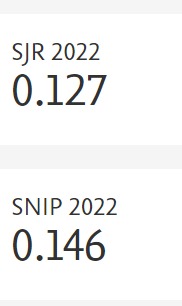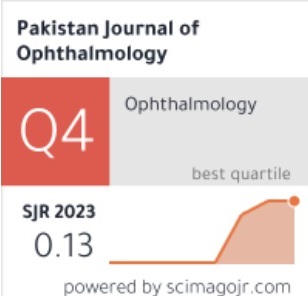Refractory Diabetic Macular Edema in Phakic Patients Looking for Answer
DOI:
https://doi.org/10.36351/pjo.v34i1.12Abstract
Purpose: To evaluate efficacy of intra-vitreal triamcinolone acetate (TA) in the treatment of macular edema secondary to diabetes mellitus, not responding to intra-vitreal bevacizumab injection. Study Design: Quasi experimental study. Place and Duration of study: Study was conducted in mayo hospital. Study duration was six months January 2017 to June 2017. Material and Methods: Our study was prospective case series, which included 14 patients having diabetes and refractory diabetic macular edema, with history of 3-8 injections of intra-vitreal bevacizumab. Patients included in the study underwent phacoemulsification along with intra-vitreal injection of triamcinolone acetate in a single sitting. Best corrected visual acuity (BCVA) and Central Macular Thickness (CMT) was documented pre-op and post-op at 1, 4, 8 and 16 weeks. Results: Mean age of study population was 44.5 ? 4.94 years. Out of 14 patients, 11 (78.6%) patients were males and 3 (21.4%) were females. Results showed that 12 patients (85.7%) had improvement in BCVA, one patient (7.1%) had no improvement in BCVA while one patient (7.1%) had decrease in visual acuity from 0.2 Log MAR to 0.1 Log MAR. 12 (85.7%) patients showed decrease in CMT, while 2 (14.2%) showed increase in CMT. Only 1 (7%) patient showed increase in IOP which was outside normal limits. Conclusion: Intra-vitreal triamcinolone, when given in an appropriate doze is an effective treatment of refractory macular edema. Cataract extraction can reduce steroid related complications, improve compliance and better visual outcome. Key Words: Triamcinolone Acetate, Bevacizumab, Macular edema, Best Corrected Visual Acuity, CentralMacularThickness.






